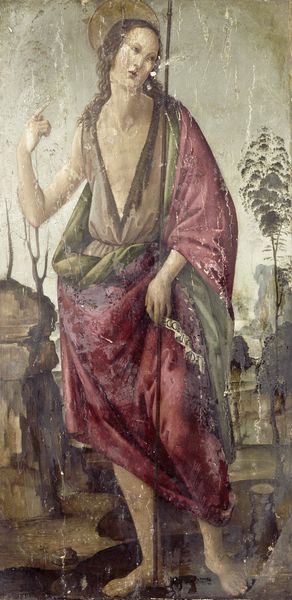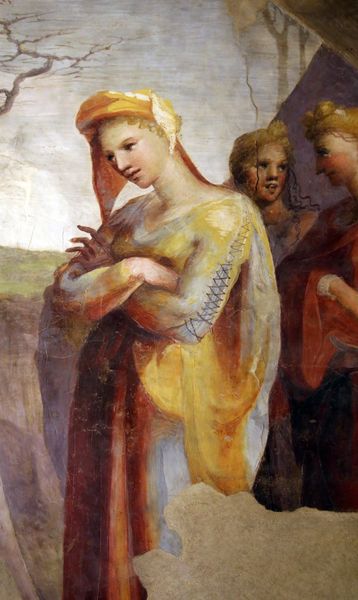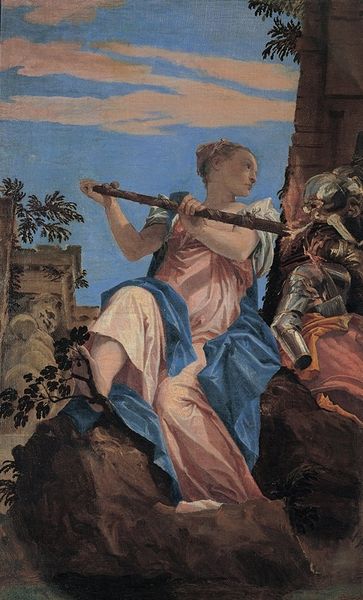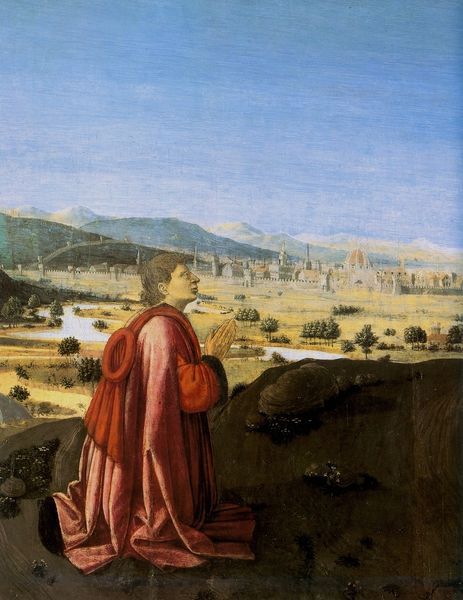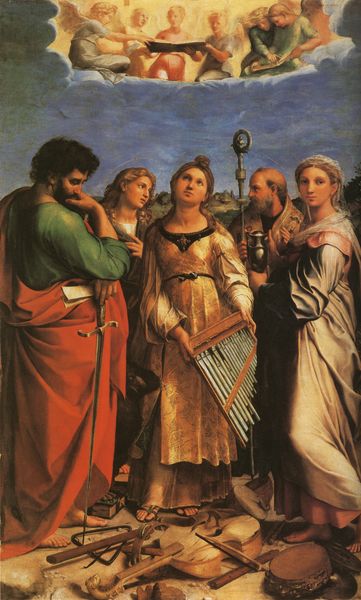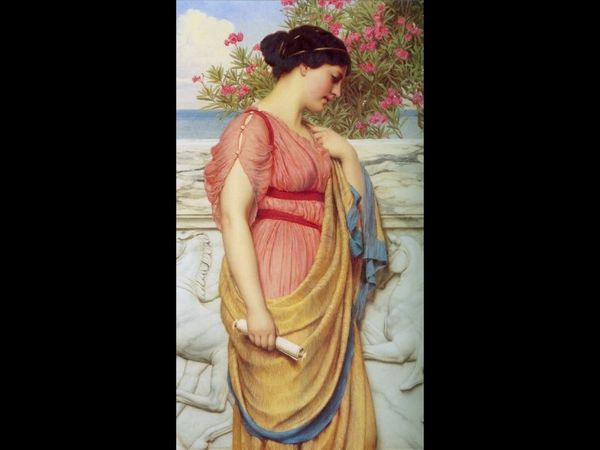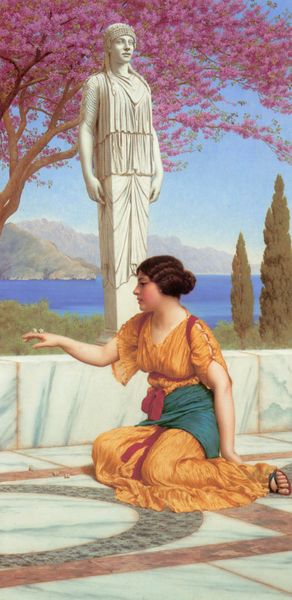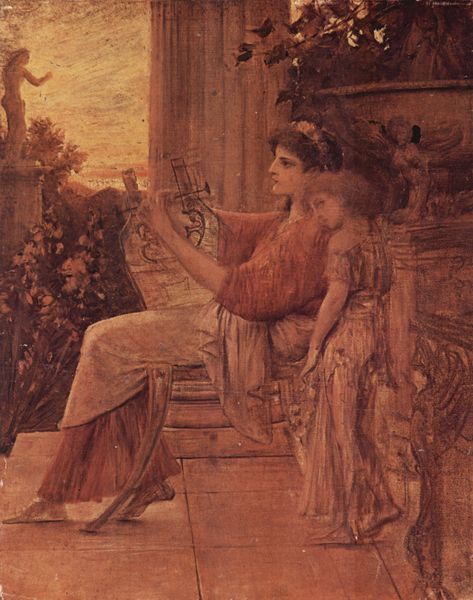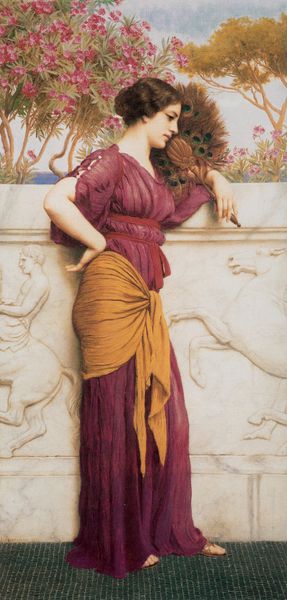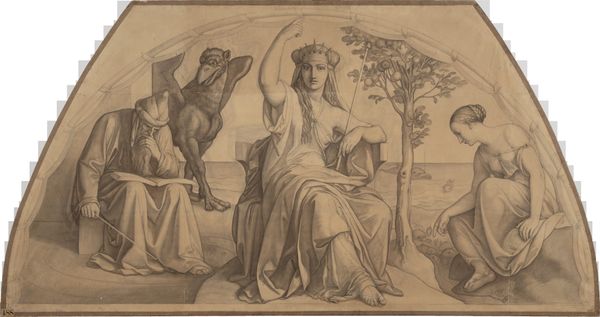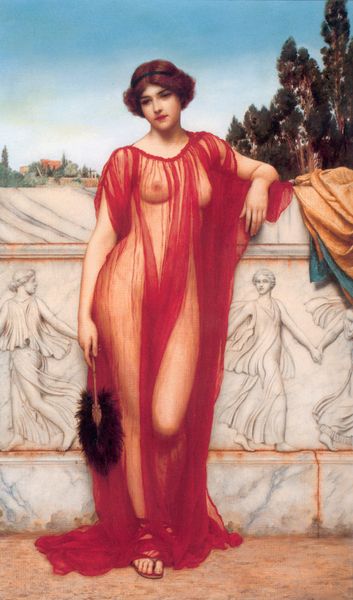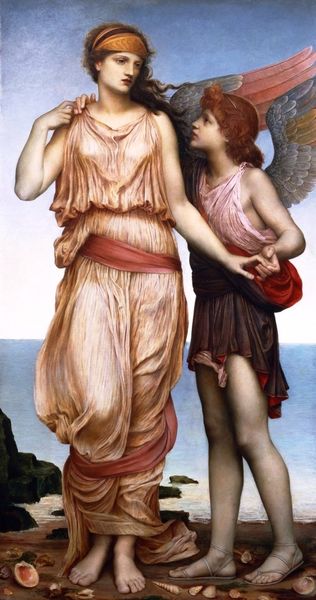
painting, fresco
#
portrait
#
neoclacissism
#
16_19th-century
#
allegory
#
painting
#
landscape
#
figuration
#
fresco
#
oil painting
#
classicism
#
history-painting
#
academic-art
Dimensions: 284.5 x 191.0 cm
Copyright: Public Domain
Curator: This is Philipp Veit’s "Italia," painted between 1834 and 1836. It’s a fresco, now residing in the Städel Museum. Editor: It’s…melancholy. The figure, draped in these striking colours, is seated but doesn’t strike a pose of strength or triumph. More like…resignation? The rough stone at her feet hints at decay. Curator: Yes, "Italia" is an allegory, a symbolic representation of Italy itself. Veit painted this during a period of political fragmentation and foreign domination, a time when the dream of a unified Italy seemed distant. It's important to understand that Veit and many of his contemporaries belonged to a movement attempting to rekindle cultural nationalism. Editor: You see it in the deliberate classicism—the draped figure, the laurel wreath. But I can't help but think about the labor involved in creating this fresco. Consider the physical effort of applying the pigments to wet plaster, the cost of materials and manufacture involved in creating a grand allegorical artwork. It is the kind of labour for grand narratives. Curator: Absolutely, that’s a key aspect. The artwork's very style signals a return to idealized forms, echoing ancient Rome to inspire contemporary viewers. Editor: The setting is almost operatic. The background almost upstages the woman. But I am left to ponder how such representations shaped the socio-political landscape in real ways and not just through idealism. These nationalist sentiments fed directly into policies and politics of the 19th and 20th century. Curator: And look closely. The apple tree bursting with fruit is juxtaposed with those stark, structural plants beneath her. The contrast suggests both the potential of Italy, the ripeness waiting to be harvested and the prickly conditions and realities on the ground. Editor: Looking again I notice she is sitting. This feels meaningful somehow. Instead of being a picture of power, her resignation might convey some hope of power at rest or perhaps her expectation. Curator: Ultimately, "Italia" invites reflection on Italy’s past glories and its unrealized aspirations, reflecting the political and cultural anxieties of its time. Editor: Seeing "Italia" prompts me to consider both the artifice and the genuine hope embedded in these nationalistic images, urging to consider both the process and effects.
Comments
No comments
Be the first to comment and join the conversation on the ultimate creative platform.
